
On 10 Nov 1895, John Knudsen (“Jack”) Northrop was born, an American aircraft designer, who was an early advocate of all-metal construction and the flying wing design. As early as 1923, Jack Northrop had been convinced that the flying wing, in which the aircraft carried all loads and controls within the wing and required no fuselage and or tail sections. Such a design, he believed, would be substantially more efficient than conventional airplanes and should be the next major step forward in aircraft design. After WWII, Northrop produced a practical prototype, and the Air Force was sufficiently impressed to order 30 production models. Today's book pick is: Jack Northrop and the Flying Wing: The Story Behind the Stealth Bomber, by Ted Coleman, Robert Wenkam. In a sad twist to history, in 1948, interference from the subsequent Air Force Secretary, Stuart Symington, resulted in cancellation of the contract and destruction of components in production. Northrop was so disheartened that he went into premature retirement. Three decades later, in an irony-heavy turn of events, the government began pouring billions of dollars into the development of the supersecret Stealth bomber, based directly on Northrop's pioneering aerodynamic discoveries. The Northrop B-2, it turns out, is a flying wing. The author Ted Coleman was one of the Northrop Corporation's founding directors, and sheds light on Symington's questionable motives in obstructing Northrup's original 1940s work.
It is available from Amazon, typically about New from $34.95. Used from $3.03. (As of earlier time of writing - subject to change.)
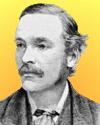 | The embryological record is almost always abbreviated in accordance with the tendency of nature (to be explained on the principle of survival of the fittest) to attain her needs by the easiest means. |
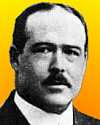 | I may finally call attention to the probability that the association of paternal and maternal chromosomes in pairs and their subsequent separation during the reducing division as indicated above may constitute the physical basis of the Mendelian law of heredity. |
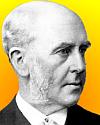 | When autumn returns with its long anticipated holidays, and preparations are made for a scamper in some distant locality, hammer and notebook will not occupy much room in the portmanteau, and will certainly be found most entertaining company. |
| Before you look at today's web page, see if you can answer some of these questions about the events that happened on this day. Some of the names are very familiar. Others will likely stump you. Tickle your curiosity with these questions, then check your answers on today's web page. | |
| Births | |
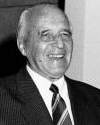 | Ernst Otto Fischer, born 10 Nov 1918, was a German theoretical chemist. He shared the 1973 Nobel Prize for Chemistry for his identification of a completely new way in which metals and organic substances can combine. Fischer first knew of a newly synthesized organometallic sandwich compound in 1951, while its structure was unknown. So Fischer studied it, and determined that it consisted of a single metal atom sandwiched between two five-sided carbon rings. Which metal atom was in the compound he studied? |
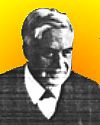 | Robert Innes, born 10 Nov 1861, was a Scottish astronomer who in 1915 discovered the closest star to earth after the Sun. Can you name this star? |
| Deaths | |
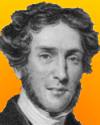 | Gideon Algernon Mantell (1790-1852) was a British paleontologist who, in 1825, named the iguanodon (“iguana tooth”) based on his find of its fossil teeth (1822). He observed they had similarities to those of the present lizard, the iguana. In his life he also discovered fossils of 4 of the 5 genera of a certain type of animals known in time. For which kind of animal did he find 4 of the 5 then-known genera? |
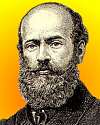 | Alexandre-Henri Mouhot was a French naturalist and explorer who is remembered for his reports on the ruins of the ancient capital, Angkor. Although the location was known to the local population, and had been visited by several westerners since the 16th century, it was Mouhot's evocative accounts and detailed sketches that popularized the Angkor series of sites with the western public. He died at age 35 of malaria. Angkor is in which country? |
| Events | |
 | On 10 Nov 1885, the world's first motorcycle, designed by Gottlieb Daimler, made its debut. The frame and wheels were made of wood. Power from the engine was transferred to large brass gears mounted to the rear wheel. What was used to transfer the engine power to the wheel gears? |
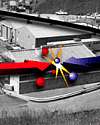 | On 10 Nov of a certain year, the discovery of the “charmed quark” subatomic particle was announced simultaneously by the two American experimental groups responsible. The new particle, of mass 3095 MeV had a lifetime about 1000 times more than that of other particles of comparable mass. In what decade was this discovery made? |
Fast answers for the previous newsletter for November 9: stuff • condensed milk • Israel's first president • the “rainbow” hologram used as a security feature on credit cards • decade including the year 1967 • light amplification by stimulated emission of radiation • decade containing the year 1925.
 If you enjoy this newsletter, the website, or wish to offer encouragement or ideas, please send feedback by using your mail reader Reply button.
If you enjoy this newsletter, the website, or wish to offer encouragement or ideas, please send feedback by using your mail reader Reply button. Your click on a Facebook, StumbleUpon, or other social button on the site webpages is also a welcome sign of appreciation. Thank you for using them.
© This newsletter is copyright 2020 by todayinsci.com. Please respect the Webmaster's wishes and do not put copies online of the Newsletter — or any Today in Science History webpage. (If you already have done so, please remove them. Thank you.) Offline use in education is encouraged such as a printout on a bulletin board, or projected for classroom viewing. Online, descriptive links to our pages are welcomed, as these will provide a reader with the most recent revisions, additions and/or corrections of a webpage. For any other copyright questions, please contact the Webmaster by using your mail reader Reply button.
--
If you do not want to receive any more newsletters, Unsubscribe
To update your preferences and to unsubscribe visit this link
Executive Real Estate Business Class
-
"It was like a man with wings. It wasn't like anything you'd see on TV or in a monster movie." ...
About the publisher
Search This Blog
Blog Archive
-
▼
2020
(1542)
-
▼
November
(164)
- Last day to save! Take advantage of Black Friday d...
- On This Day for November 30 - Independence of Barb...
- Newsletter for Monday 30 November.
- November 30: Cnut the Great, the 1st State to Abol...
- FAMILY: Happiness in a stressful season
- Medieval monarchs | WW1 quiz | Marlborough pie recipe
- On This Day for November 29 - United Nations resol...
- Newsletter for Sunday 29 November.
- November 29: Edison's Phonograph, Schrödinger's Ca...
- The Compass: Italy
- See the past through a different lens with Nat Geo...
- On This Day for November 28 - Opening of Tehrān Co...
- Newsletter for Saturday 28 November.
- November 28: Exploration, Invention and a Day of F...
- PHOTOGRAPHY: How adversity inspired discovery for ...
- The gift of curiosity lasts a lifetime. Give Nat G...
- Very Weird — And Very Real — Facts About The Victo...
- Black Friday Deals: Save 50% on a Britannica Membe...
- Black Friday Savings at the HISTORY Store
- On This Day for November 27 - Nobel Prizes establi...
- Newsletter for Friday 27 November.
- November 27: The Model Parliament, the 1st Native ...
- ANIMALS: The pets I’m thankful for
- A Very Special Thanksgiving Edition Of Our Newsletter
- On This Day for November 26 - Premiere of Casablan...
- Newsletter for Thursday 26 November.
- YOUR WEEKLY ESCAPE: They live in a legendary under...
- November 26: 1st National Thanksgiving, Alice in W...
- SCIENCE: The prehistoric truth about turkeys
- UPDATED: Every Membership Now 50% Off!
- Every Membership Now 50% Off!
- Demystified: Is the Ozone Layer Finally Healing It...
- On This Day for November 25 - Japanese military ba...
- Newsletter for Wednesday 25 November.
- November 25: Dynamite and The Mousetrap
- TRAVEL: Keeping your family safe over the holidays
- Meet The Real-Life "Dexter" — Serial Killer Of Mur...
- On This Day for November 24 - Dutch discovery of T...
- Newsletter for Tuesday 24 November.
- November 24: 1st Transit of Venus Observed, Van Di...
- HISTORY: The faces of COVID-19’s toll
- New This Week on History News Network
- On This Day for November 23 - Ley Juárez passed, I...
- Newsletter for Monday 23 November.
- November 23: On This Day in History
- FAMILY: Keeping the holidays familiar for your kids
- The many faces of Anne Boleyn | Take our Tudors qu...
- On This Day for November 22 - U.S. President John ...
- Newsletter for Sunday 22 November.
- November 22: Vasco da Gama Rounds the Cape and JFK...
- The Compass: Hawaii
- On This Day for November 21 - Signing of Mayflower...
- Newsletter for Saturday 21 November.
- November 21: The Mayflower Compact, a Jewish state...
- CORONAVIRUS UPDATE: 200,000 new cases in a single day
- PHOTOGRAPHY: Switching tactics to chronicle the wo...
- How The Kennedy Curse Has Tormented America's Firs...
- On This Day for November 20 - Mexican Revolution l...
- The Roundup Top Ten for November 20, 2020
- Newsletter for Friday 20 November.
- November 20: Uyghurs Conquer China, the Napoleonic...
- ANIMALS: The deadly thing about snakes
- Give your kids a love of learning with Nat Geo Kid...
- #1 Gift for Families this Holiday - On Sale Now!
- On This Day for November 19 - Anwar Sadat's visit ...
- Newsletter for Thursday 19 November.
- November 19: "Four Score and Seven Years Ago..."
- YOUR WEEKLY ESCAPE: Not all of the dinosaurs died
- SCIENCE: Can we make North America’s greatest reso...
- The Latest News from History News Network
- On This Day for November 18 - Jonestown massacre, ...
- Newsletter for Wednesday 18 November.
- November 18: St. Peter's Basilica is Consecrated a...
- TRAVEL: Best of the World 2021
- Black Friday Early Access! 50% off Holiday Bundles...
- Photographer Captures the Impacts of Climate Chang...
- On This Day for November 17 - Arnold Schwarzenegge...
- Newsletter for Tuesday 17 November.
- November 17: On This Day in History
- HISTORY: Thanksgiving in tough times
- New This Week on History News Network
- On This Day for November 16 - Election of Bhutto a...
- Newsletter for Monday 16 November.
- November 16: Francisco Pizarro Ambushes Atahualpa,...
- FAMILY: Keeping kids kind during this stressful time
- The Crown S4 | Henry VIII's seventh wife | Vikings...
- On This Day for November 15 - Palestinian statehoo...
- Newsletter for Sunday 15 November.
- November 15: The Scramble for Africa and the Vietn...
- The Compass: Peru
- On This Day for November 14 - Eritrea made a provi...
- Newsletter for Saturday 14 November.
- CORONAVIRUS UPDATE: The U.S. enters uncharted terr...
- November 14: Kirch's Comet, Einstein's Theory of L...
- PHOTOGRAPHY: In the land of Arctic dreams
- The Unhinged Soldier Who Avenged Lincoln's Assassi...
- The Roundup Top Ten for November 13, 2020
- On This Day for November 13 - Terrorist attacks in...
- Newsletter for Friday 13 November.
- ANIMALS: Images to surprise and delight during thi...
-
▼
November
(164)
-
Blogroll
-
About
HistoryFact










0 comments:
Post a Comment